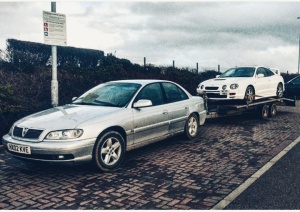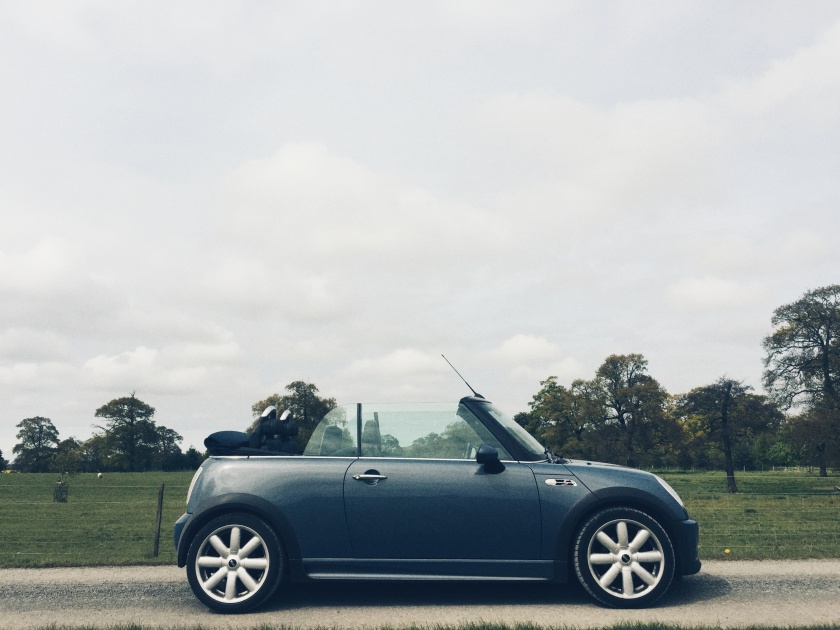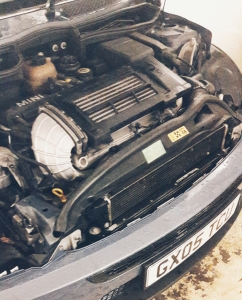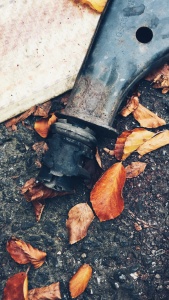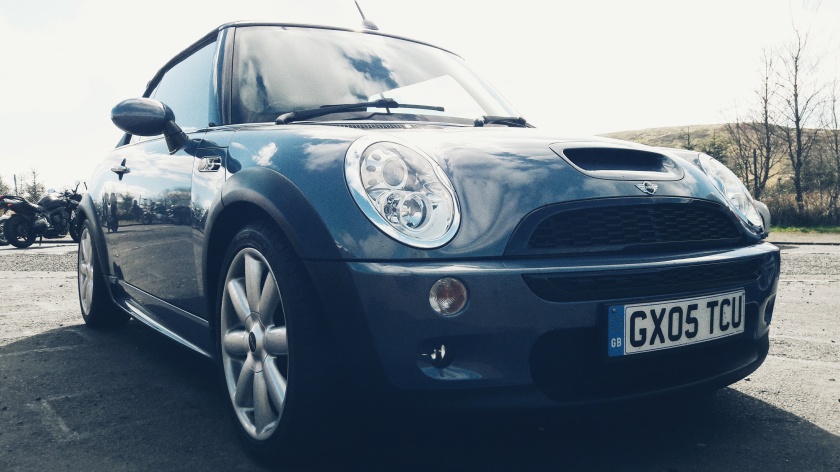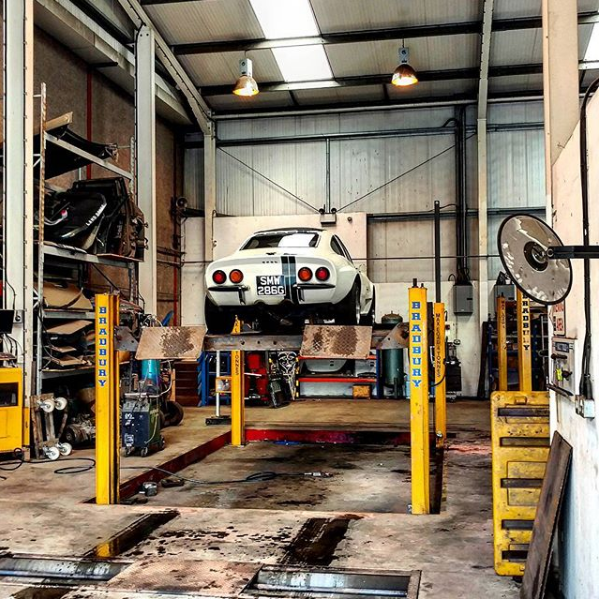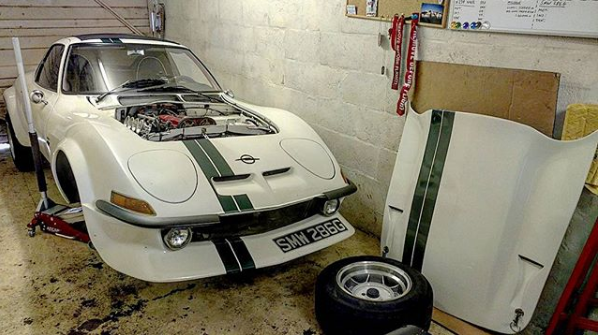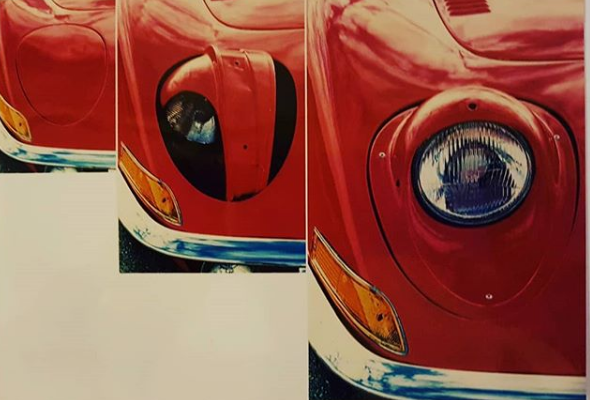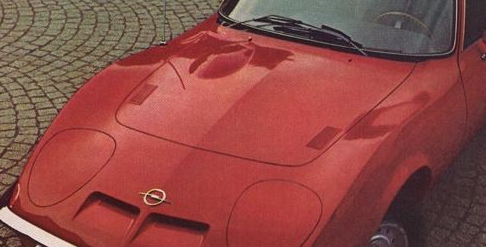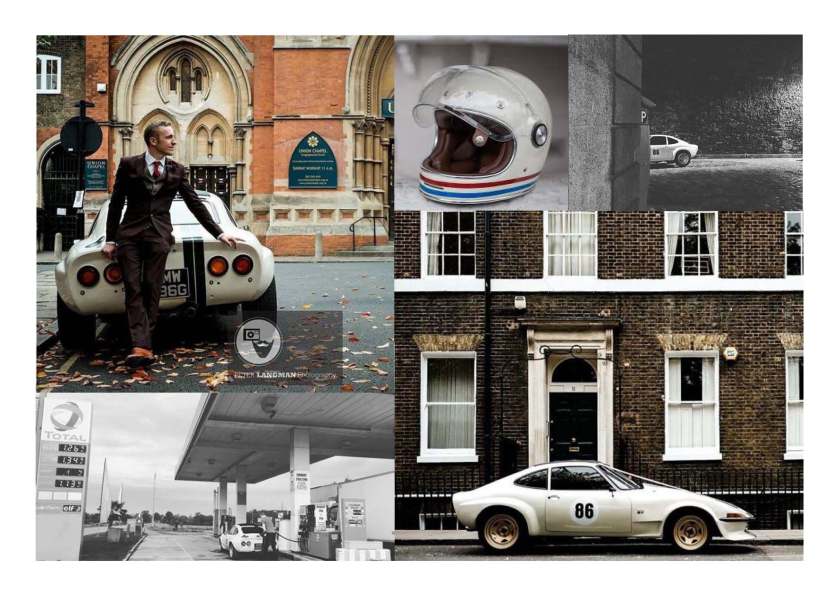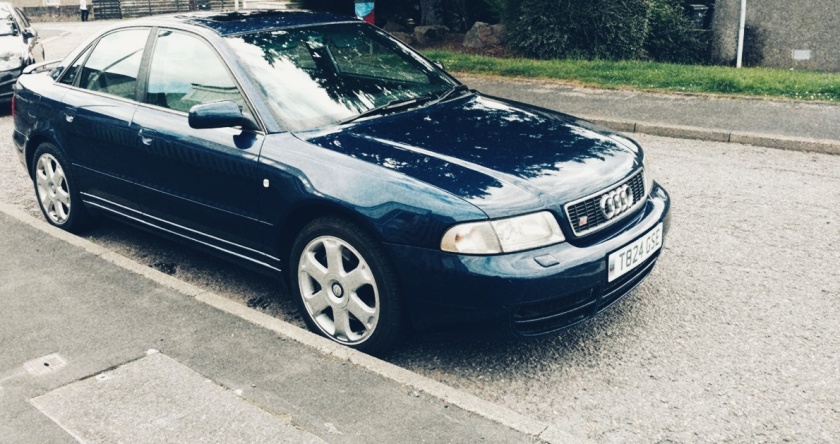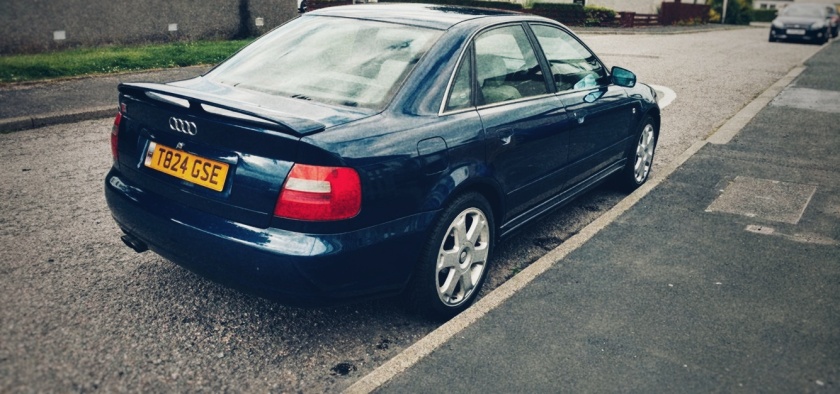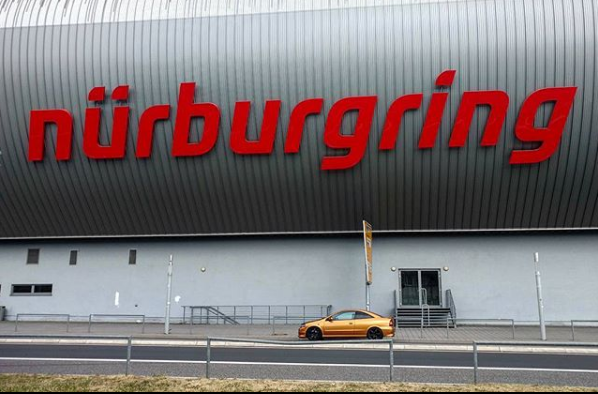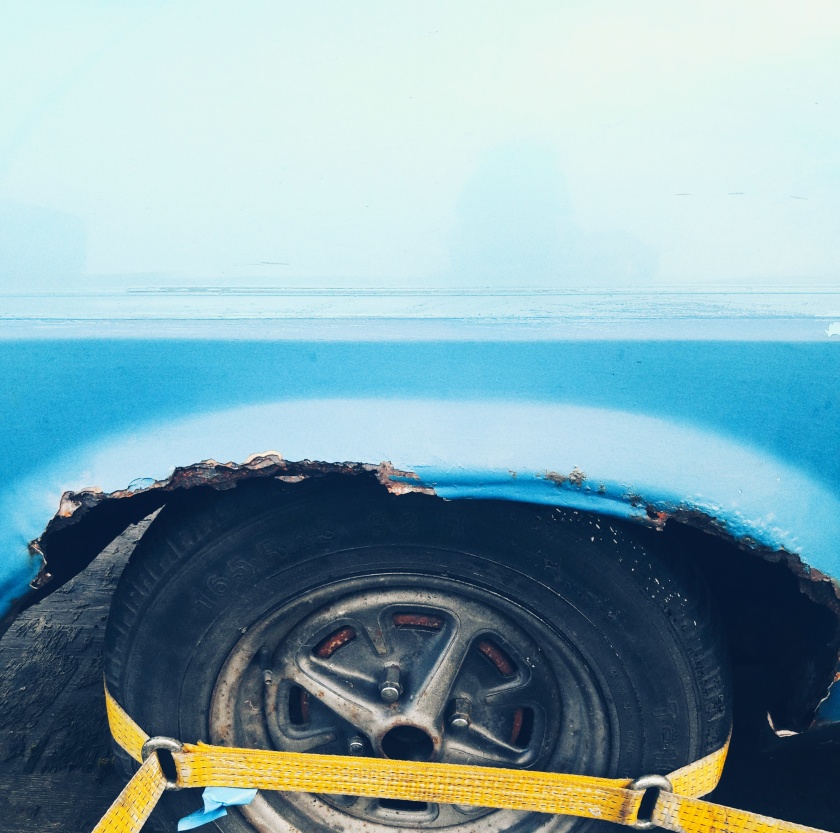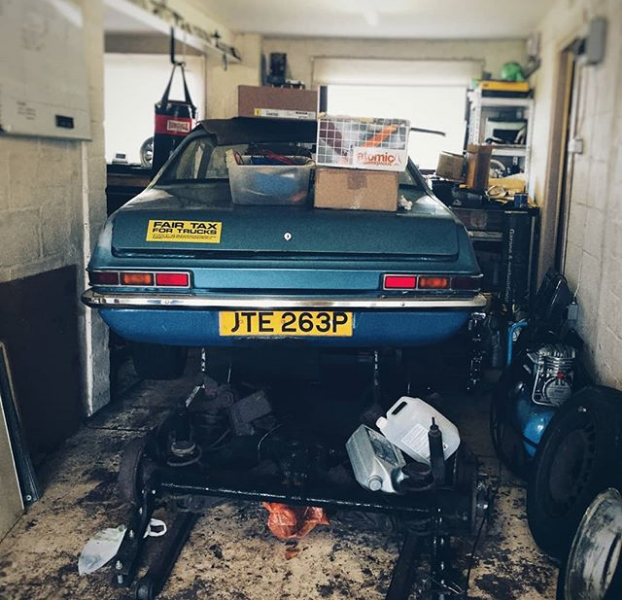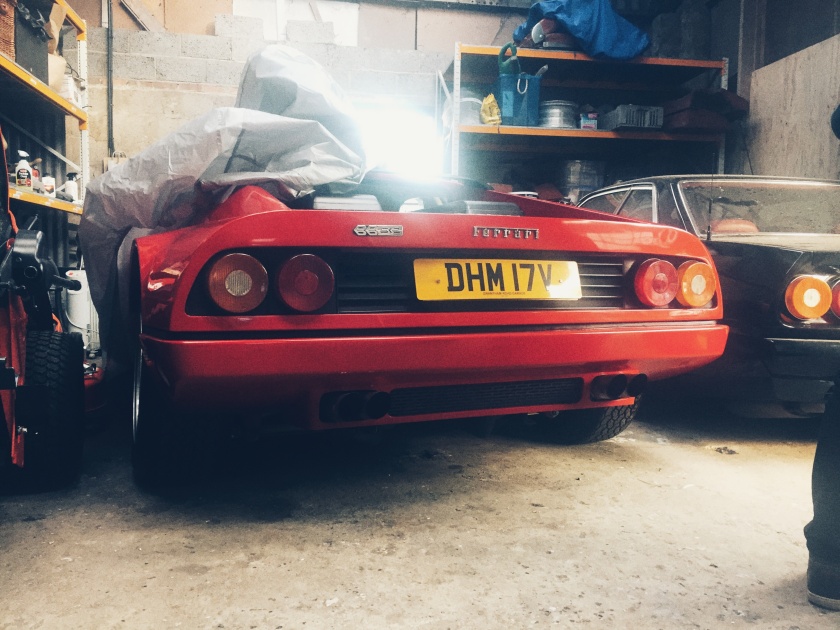If you had to choose between a day at the track and day at the drag strip, I’m assuming most of you would pick the former. Just as well then, that the choice was made for us during what was meant to be a weekend of motorsport.
We had planned to take 2 cars to Crail Raceway… Scotland’s ‘premier’ drag strip (read: only drag strip). Well, at least it’s the only official drag strip, barring such oddities as the Barmac Mile and other spots known only to locals of hooning intent. Since the Astra was promoted to all round ‘track weapon’ it now meant that taking two cars to such an event automatically involved in to 3 cars and a trailer.
“What could possibly go wrong…”
The Rig is the affectionate term for an Omega pulling an enormous car trailer with an Astra on top. This view bearing down on you in your rear view mirror is enough to make you pull swiftly aside on the fast lane of the A90 as much out of confusion as horror. The mighty V6 grunt of the Omega does a good enough job of lugging that enormous weight around even if it doesn’t do such a good job of stopping it. A swift servicing of the trailers brakes is likely in order though they’re probably a good deal more freed off than they were before they were thrashed around Fife’s back roads over a 2 day road trip.
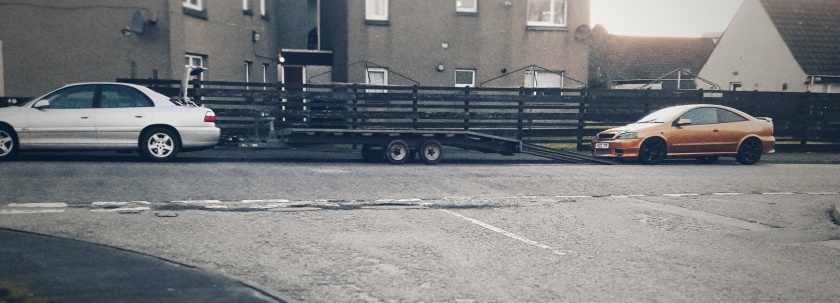
An earlier chat with a friend suggested that there was a track day with open pit lane and strict rules occurring at Knockhill, Scotland’s ‘premier’ race track, that very weekend (read: only race track). Well, at least it’s the only official race track…
A weekend of motorsport was born.
A suitably located Premier Inn was sought in the upstanding Scottish town of Glenrothes, which happily also provided a car park big enough to accept the illustrious HMS Vauxhall. Well, the pub next door did anyway, and thanks to our last minute preparations and with no foresight whatsoever we arrived late enough to find the pub shut and the car park empty.
Knockhill was a brand new day with near perfect track day conditions. The sun was shining, the track was recently resurfaced and though not fully worn in, the slippery conditions of earlier in the year had given way to smooth trouble free tarmac. It was a dry day, the likes of which Scotland hadn’t seen for approximately 4 months. Truly perfect conditions during which to make the most of a 4 hour open pit session. What could possibly go wrong.
The Astra had been taken off the road last year to get around that pesky annual MOT requirement and also because the modifications in place were already making it an unruly daily driver. The carbon clutch purchased a number of years ago had long since deceased after only a year, mainly thanks to the stress of the launch required to successfully clear the Haudagain roundabout. This meant that the fateful morning on which it had been delivered, whereby I had been summoned by a UPS delivery man flapping a £140 import duty charge in my face on my doorstep, had totally been worth it… Ah yes, sarcasm. I’d been stood in my pyjamas looking bewildered as the full enormity of why my husband hadn’t wanted to disclose the full amount spent on his ‘overnight parts from the US’ became clear. The replacement Spax Viggen clutch was holding up nicely however and we’d since forgiven the LSD for it’s grunting and grinding in super market car parks when it had proven its worth many times over around the Nurburgring. That is, we had forgiven it… until today.
The 5th run around what is an undeniably short track, the Astra started to judder hideously under power. It soon became apparent that all was not well, though the source was not immediately identifiable. We limped forlornly back to the paddock, grateful that the car could, for now at least, still move under it’s own steam.

Upon checking the time, we had used approximately 1hr15 minutes of a 4 hour track session and we were now stood in front of a newly deceased Vauxhall Astra. It was clear by this point that the problem was too big to effect a miraculous resuscitation here in the paddock and very little remained to be done but get it back on the trailer.
It was at this point, whilst lamenting over the downfall of the most exciting 1/3 of the HMS Vauxhall that we suddenly became aware of the 3rd car in this sorry saga. Our heads turned in slow unison towards the unsuspecting Mini Cooper S parked alongside. Any queries around scrutineering were quashed when the team simply replied ‘just move the blue sticker’ upon enquiring about a last minute, breakdown induced vehicle swap for the day. We were back in the game and with 2hr30 left of the session, there was plenty of time to make up.
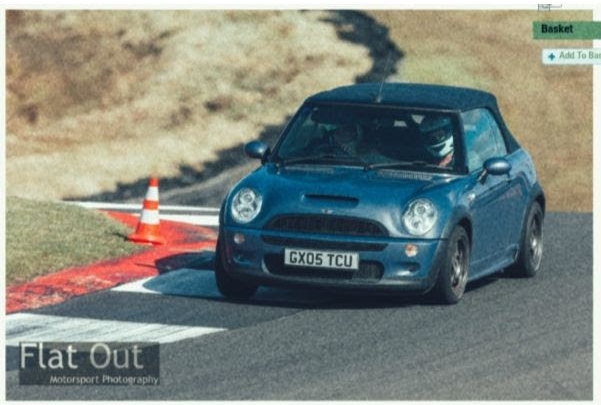
The mini is stock. Stock brakes, stock power, stock suspension. It was a revelation. The only change from factory was a set of 15″ Rota slipstreams which are naturally a very light wheel, but made even more so by the loss of 2″ of diameter from the factory 17″ bullet wheels which come with the car. The tyres were an old set of toyo proxes from back in the day when Eddie was running his 1.4 litre Vauxhall Corsa. Despite the propensity for rubber to go off, a quick look over these suggested that they’d ‘probably last the day’ which was as far in to the future as we were willing to look at this stage. With the shattered diff in the Astra, Crail was now much less important than eeking a few more glorious hours out of Knockhill in a stock Cooper S.
Eddie took her out first and almost went off the track at the first corner. Wait… what!? I thought you said it was decent? The turn in on the Mini was so much more aggressive than on the Astra that he turned too soon, grass beckoned. A quick recalibration from the driver meant that we were soon on our way with a greater appreciation for the Mini’s go-kart reputation. From that corner forward, much fun was had. The 300+bhp of the Astra is hard to handle on a short track. The benefit of the 170bhp Mini was that you could rev the tit’s off it and never be going too fast. The car was tight and chuckable, perfect for my code zero skill level. The tyres and brakes were the limiting factor, both holding out for 4 laps max. A new hobby was birthed that weekend with me resolving to upgrade the brake fluid and change the rear pads as a start, given that the front’s had only recently been done for the MOT. She also came with with pair of R56 17″ Crown alloys which are due to be sold to make way for something sporty and lightweight with a set of R888’s or something similar.
In short – can’t wait to get it back out on the track and next time we’ll be booking on two cars instead of one… though given the state of the diff on the Astra and the fact that he can’t even make eye contact with it right now it’ll be more likely to be the VX220 joining me next time.

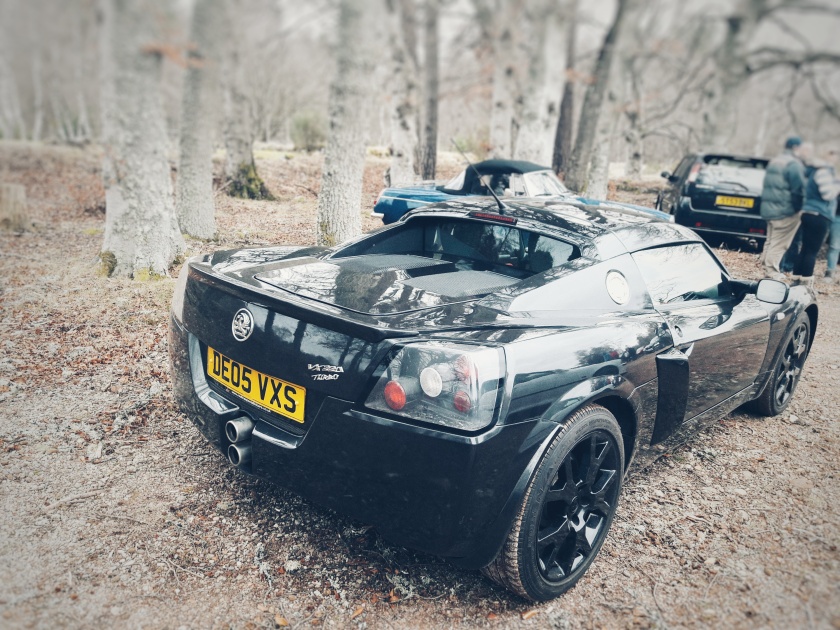

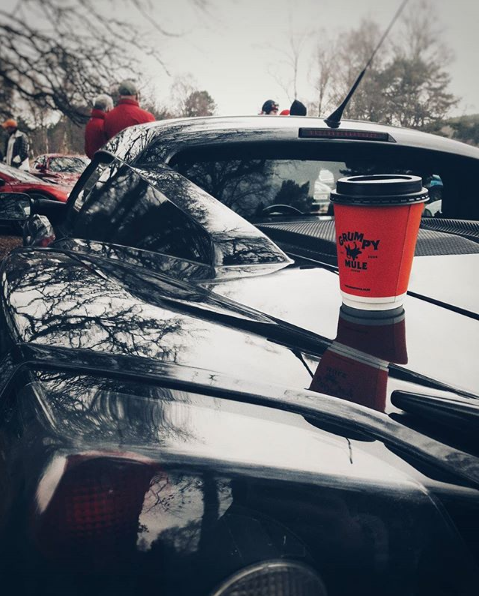
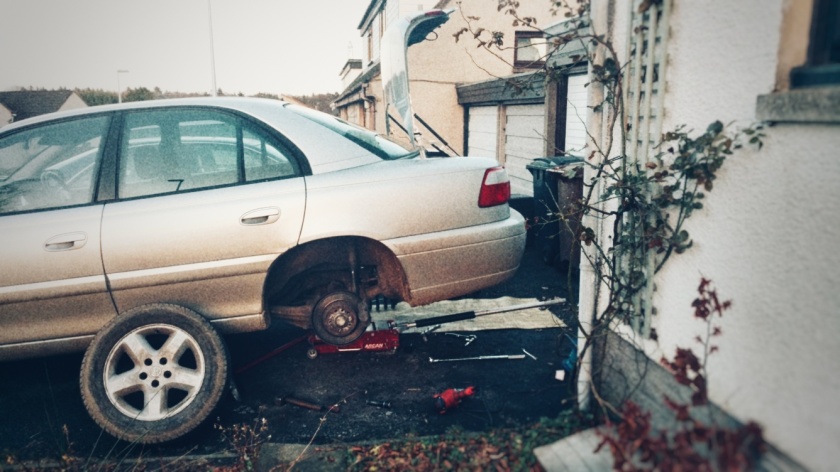
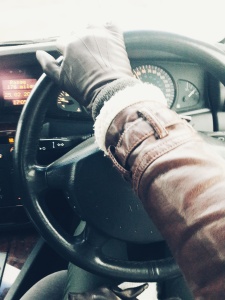 Inside, it is extremely roomy. It carried a set of 4 wheels with aplomb and it tows pretty much anything with relative ease.
Inside, it is extremely roomy. It carried a set of 4 wheels with aplomb and it tows pretty much anything with relative ease.